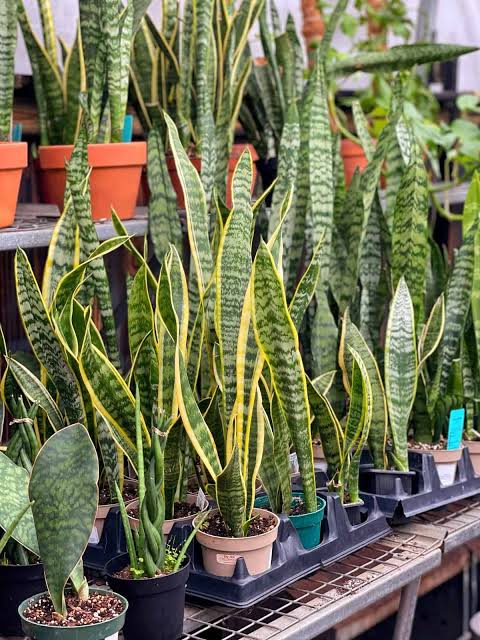When it comes to houseplants that combine beauty, resilience, and low maintenance, the snake plant (also known as Sansevieria or Mother-in-Law’s Tongue) easily tops the list. Whether you’re a beginner gardener or a busy professional, this stylish, hard-to-kill plant has become a global favorite for good reason.In this guide, we’ll uncover why everyone loves how to care for snake plant, how to keep it thriving with minimal effort, and why it deserves a spot in every home or office. 🌿🌱 What Makes the Snake Plant So Special?The snake plant is more than just a trendy houseplant — it’s practically indestructible! With its tall, sword-like leaves, striking green patterns, and ability to survive neglect, it’s a dream plant for beginners and seasoned plant lovers alike.Here’s why it’s adored worldwide:🪴 Low Maintenance: Thrives on minimal water and light.🌤️ Adaptable: Survives in both sunlit windows and dim corners.🌬️ Air Purifying: NASA studies found it removes toxins like formaldehyde and benzene.🌿 Decor-Friendly: Its clean, modern look complements any décor style.✨ Fun Fact: Snake plants are one of the few plants that release oxygen at night — making them perfect for bedrooms!☀️ Light: The Secret to Snake Plant SuccessOne reason everyone loves how to care for snake plant is that it’s incredibly forgiving when it comes to light.🌤️ Best Lighting Conditions:Bright, indirect sunlight is ideal.Low light areas work fine too — it just grows more slowly.Avoid harsh, direct sunlight for long periods; it can scorch the leaves.💡 Tip: Rotate your plant every few weeks to encourage even growth and prevent leaning toward the light.💧 Watering: Less Is MoreWhen caring for a snake plant, overwatering is the only real enemy. These plants store water in their leaves, making them drought-tolerant and easy to manage.💦 Watering Tips:Water every 2–4 weeks, depending on humidity and temperature.Let the soil dry out completely between waterings.In winter, water less frequently — maybe once a month.Always use a pot with drainage holes to prevent root rot.🚫 Common Mistake: Don’t let your snake plant sit in standing water — soggy roots lead to decay.🌿 The Right Soil & Potting MixSnake plants love well-draining soil that prevents moisture buildup.🌱 Best Soil Mix:1 part succulent or cactus mix1 part regular potting soilOptional: Add perlite or sand for extra drainage🪴 Pro Tip: Use a terra cotta pot — it helps wick away excess moisture and keeps roots healthy.🌡️ Temperature & HumiditySnake plants are tropical by nature but remarkably adaptable to different climates.🌞 Ideal Conditions:Temperature: Between 60–85°F (15–29°C)Humidity: Average indoor humidity is perfectProtect from cold drafts or frost — it doesn’t like temperatures below 50°F (10°C).🌬️ Tip: Snake plants thrive indoors year-round — just keep them away from air conditioning vents or heaters.🌸 Fertilizing: A Light TouchSnake plants aren’t heavy feeders, but a little nutrition goes a long way.🌼 Feeding Schedule:Fertilize once every 2–3 months during spring and summer.Use a balanced houseplant fertilizer diluted to half strength.Skip fertilizing in winter — the plant naturally slows its growth.🧡 Tip: Too much fertilizer can burn the roots, so “less is best.”✂️ Pruning & PropagationPart of the fun of learning how to care for snake plant is discovering how easy it is to grow more!🌿 Pruning:Trim yellow, brown, or damaged leaves with clean scissors.Remove older outer leaves to encourage new growth.🌱 Propagation:You can create new snake plants in three easy ways:Leaf Cuttings: Cut a healthy leaf into 3–4 inch sections and plant in moist soil.Water Propagation: Place leaf cuttings in water until roots appear, then transfer to soil.Division: Gently separate and repot sections of the root clump (rhizomes).🌼 Propagation Fun Fact: Each cutting may produce slightly different leaf patterns — making every new plant unique!🦠 Common Problems (and How to Fix Them)Even though snake plants are tough, a few small issues can pop up:🟡 Yellow LeavesCause: Overwatering or poor drainage.Fix: Check soil dryness and remove any rotting roots.⚫ Soft or Mushy LeavesCause: Root rot.Fix: Trim away affected parts and repot in dry, well-draining soil.🪰 Fungus GnatsCause: Soil that’s too damp.Fix: Let soil dry completely and add a top layer of sand to discourage pests.🌿 Tip: Always inspect your plant before watering — the soil should feel dry at least 2 inches below the surface.🌬️ Why Snake Plants Improve Your HomeSnake plants aren’t just easy to care for — they actually make your living space healthier and more beautiful!🌿 Benefits of Keeping a Snake Plant:Cleans the air: Removes toxins and freshens up your environment.Releases oxygen at night: Perfect for better sleep.Boosts mood and focus: Greenery has proven mental health benefits.Low maintenance beauty: Adds elegance without demanding attention.🛋️ Home Decor Tip: Pair snake plants with minimalist pots — white ceramic or woven baskets make their sleek leaves stand out.💡 Quick Recap: How to Care for Snake Plant Like a ProLight: Bright, indirect or low lightWater: Every 2–4 weeks (let it dry out!)Soil: Well-draining cactus mixTemperature: 60–85°F (avoid cold)Fertilizer: Every few months in growing seasonPot: Good drainage = healthy rootsPropagation: Easy via cuttings or division🌼 Conclusion: Why Everyone Loves How to Care for Snake Plant!It’s no mystery why everyone loves how to care for snake plant — it’s one of the most low-maintenance, elegant, and air-purifying plants you can own. Even if you forget to water it, your snake plant will keep standing tall, purifying the air, and brightening your space.Perfect for beginners and busy plant parents alike, the snake plant proves that beautiful greenery doesn’t have to be complicated. So if you’re looking for a stylish, easy-care addition to your home — the snake plant is your new best friend! 🌿✨

